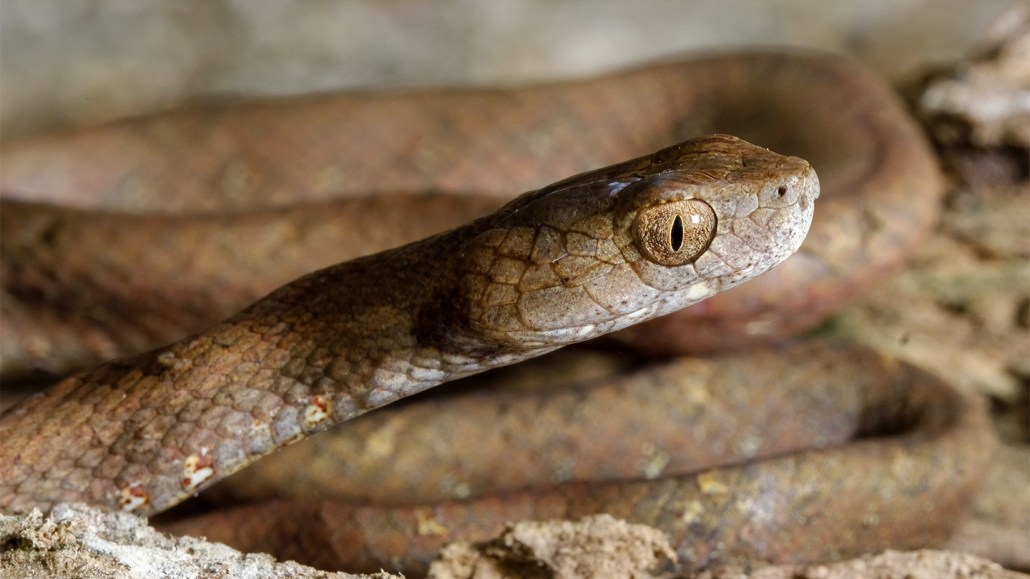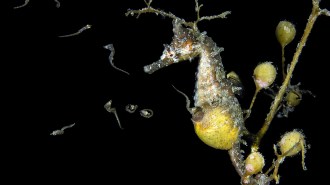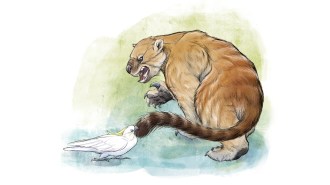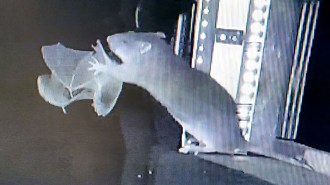Hundreds of snake species get a new origin story
Elapoid snakes, including cobras, mambas and sea snakes, may have evolved in Asia, not Africa

The mock viper (Psammodynastes pulverulentus) is found throughout Southeast Asia. That continent is where it and other elapoid snakes first evolved, before many spread globally, a new study finds.
Jeff Weinell
The ancestors of cobras and related snakes first emerged in Asia roughly 35 million years ago.
Many researchers thought the Elapoidea superfamily of snakes evolved in Africa before slithering their way across the globe. But new genetic evidence points to the continent next door to Africa, researchers report August 7 in Royal Society Open Science.
The over 700 species of elapoid snakes are extremely diverse, including both highly venomous reptiles like mambas and sea snakes and many nonvenomous species. They’re found in subtropical and tropical regions around the world, in rainforests, deserts and oceans. But the elapoids have long had a murky origin story, says Jeff Weinell, an evolutionary biologist at the American Museum of Natural History in New York City.
Earlier genetic studies on the evolution of elapoids suggested an African origin for the group, and the oldest fossil elapoids dating back 25 million years — including an early African file snake (Gonionotophis) — come from Africa. More recent genetic studies have pointed toward Asia, says Weinell, but those and the Africa-leaning studies have used only a limited number of small sections of DNA.
“There just wasn’t enough information in those sequences to really determine what the [evolutionary] relationships are among [these snakes],” says Weinell.
So he and his colleagues sampled DNA from 65 snake species across 22 families, analyzing and comparing more than 3,100 locations in the snakes’ genomes, or genetic instruction books. The team also included previously published genetic data from 434 more snake species. The researchers then built an elapoid evolutionary tree, showing how the species were related to each other and how long ago the lineages split apart. The more genetic markers two species share, the more recently they may have shared a common ancestor.
Two groups of Southeast Asian snakes — mock vipers and cyclocorids — were the earliest to diverge, suggesting that elapoids first arose in Asia. This is still consistent with the 25-million-year-old fossil evidence in Africa, Weinell says.
“We’re showing an [elapoid] origin in Asia about 35 million years ago, and the group reaching Africa by around 30 million years ago,” says Weinell. The researchers think elapoid snakes colonized Africa four different times. The ancestor of a group that diversified into many families across the continent may have arrived first, followed by the ancestors of African cobras, African garter snakes and mambas.
Long-standing ideas like the “out-of-Africa” hypothesis of elapoid snake evolution are sometimes presumed to be accurate due to their longevity, says Justin Bernstein, an evolutionary biologist at the University of Texas at Arlington.
“However, this research refutes this hypothesis and changes what we know about the origins of one of the most species-rich groups of snakes, many of which are important species of study in evolutionary and medical research due to their venom,” he says (SN: 9/19/20).







